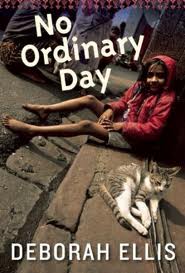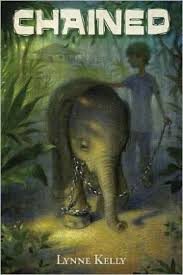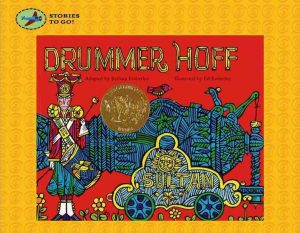Details the life and times of Guru Nanak, founder of the Sikh faith.
Author: Book Importer
No Ordinary Day

Even though Valli spends her days picking coal and fighting with her cousins, life in the coal town of Jharia, India, is the only life she knows. The only sight that fills her with terror is the monsters who live on the other side of the train tracks — the lepers. When Valli discovers that that her “aunt” is a stranger who was paid money to take Valli off her own family’s hands, she leaves Jharia and begins a series of adventures that takes her to Kolkata, the city of the gods. Valli finds that she really doesn’t need much to live and is very resourceful. But a chance encounter with a doctor reveals that she has leprosy. Unable to bear the thought that she is one of the monsters she has always feared, Valli rejects help and begins an uncertain life on the street.
See the review at WOW Review, Volume 5, Issue 3.
Chained

After 10-year-old Hastin’s family borrows money to pay for his sister’s hospital bill, he leaves his village in northern India to take a job as an elephant keeper and work off the debt. He thinks it will be an adventure, but he isn’t prepared for the cruel circus owner. The crowds that come to the circus see a lively animal who plays soccer and balances on milk bottles, but Hastin sees Nandita, a sweet elephant and his best friend, who is chained when she’s not performing and hurt with a hook until she learns tricks perfectly. Hastin protects Nandita as best as he can, knowing that the only way they will both survive is if he can find a way for them to escape.
Children of the Holocaust
At the start of World War II, there were about 1.6 million Jewish children living in Europe. Fewer than one in 10 of those children survived German leader Adolf Hitlers reign of terror. More than 100,000 Jewish children did survive, however through a combination of strength, cleverness, the help of others, and, more often than not, simple good luck. Children of the Holocaust tells the stories of these young people.
Defiance
When Nazis invade, what can kids do to fight them? World War II has taken its toll on the French countryside. German soldiers patrol the towns, searching for any challenge to their rule. The Tessier siblings, Paul, Marie, and Sophie, keep their noses clean and their faces blank as the French military police tighten their grip on their small country town. But all three are secretly doing their part for the Resistance: the men and women working hard to undermine the Germans and win back France’s freedom . . . even if it ends up costing them their lives.
The Berlin Boxing Club
In 1936 Berlin, fourteen-year-old Karl Stern, considered Jewish despite a non-religious upbringing, learns to box from the legendary Max Schmeling while struggling with the realities of the Holocaust.
Guantanamo Boy
Six months after the events of September 11, 2001, Khalid, a Muslim fifteen-year-old boy from England, is kidnapped during a family trip to Pakistan and imprisoned in Guantanamo Bay, Cuba, where he is held for two years suffering interrogations, water-boarding, isolation, and more for reasons unknown to him.
Featured in WOW Review Volume IX, Issue 2.
Christmas with the Rural Mail
A gentle poem describing the journey of a mail sleigh through rural Nova Scotia at Christmastime, delivering packages and parcels to children. The poem is carefully crafted to fit Maud Lewis’s colorful paintings, and the mail sleigh passes children skiing and tobogganing, oxen and Clydesdale horses pulling heavy loads, and the train station, among other classic rural winter scenes.


